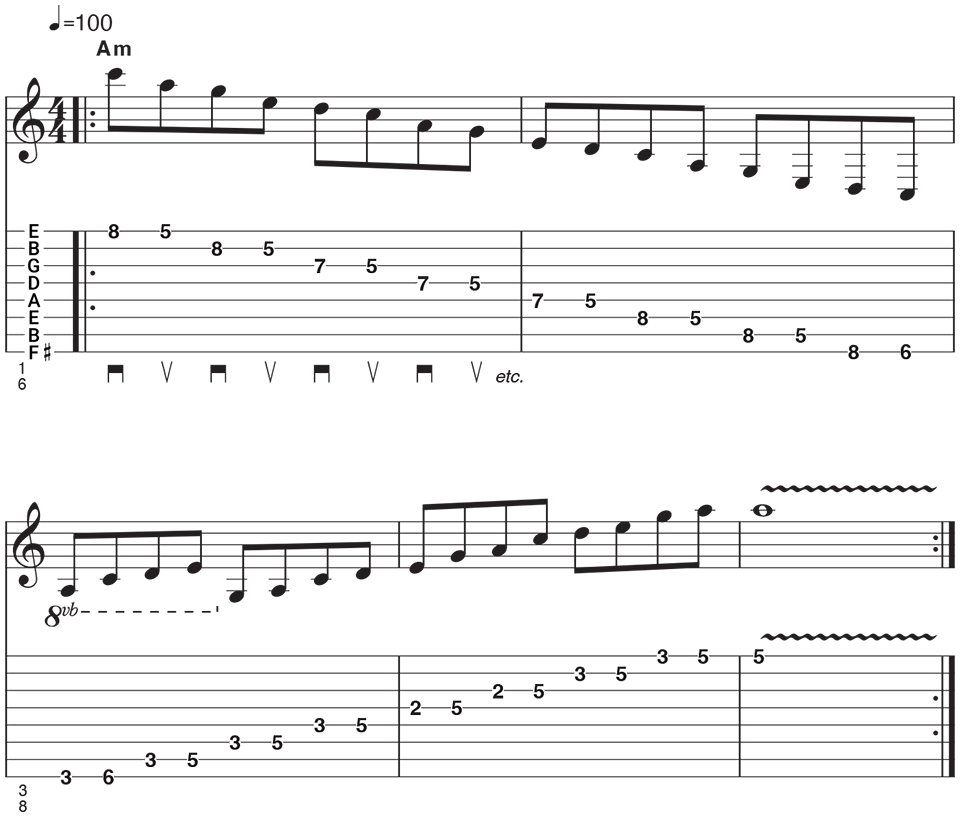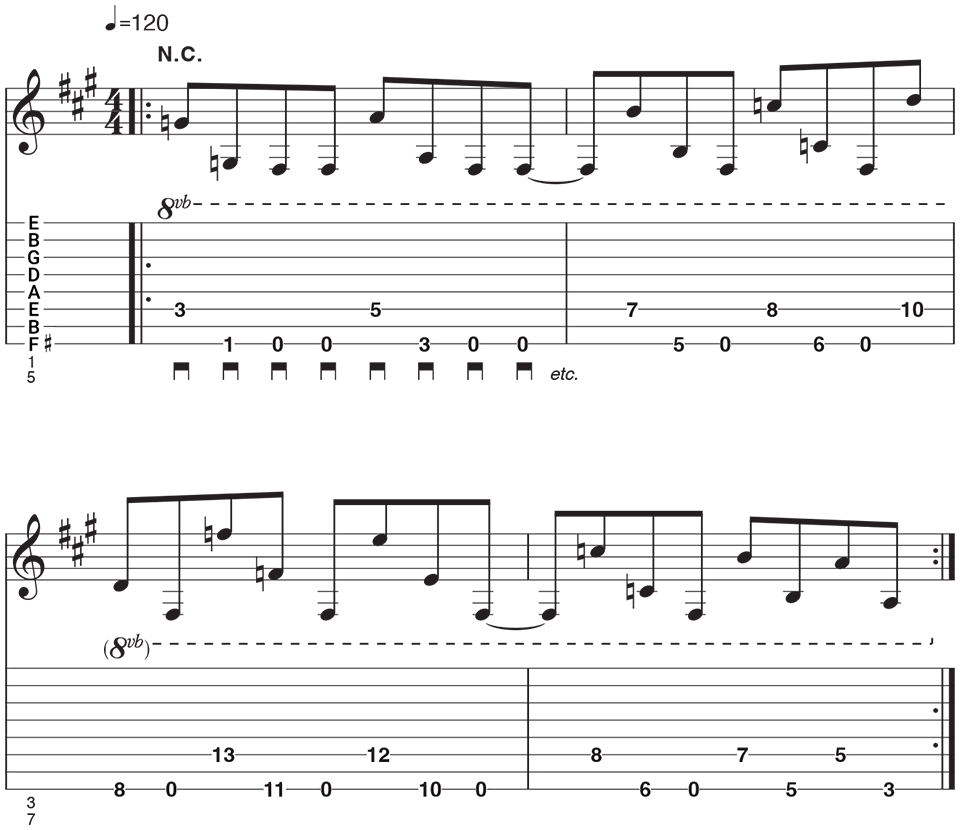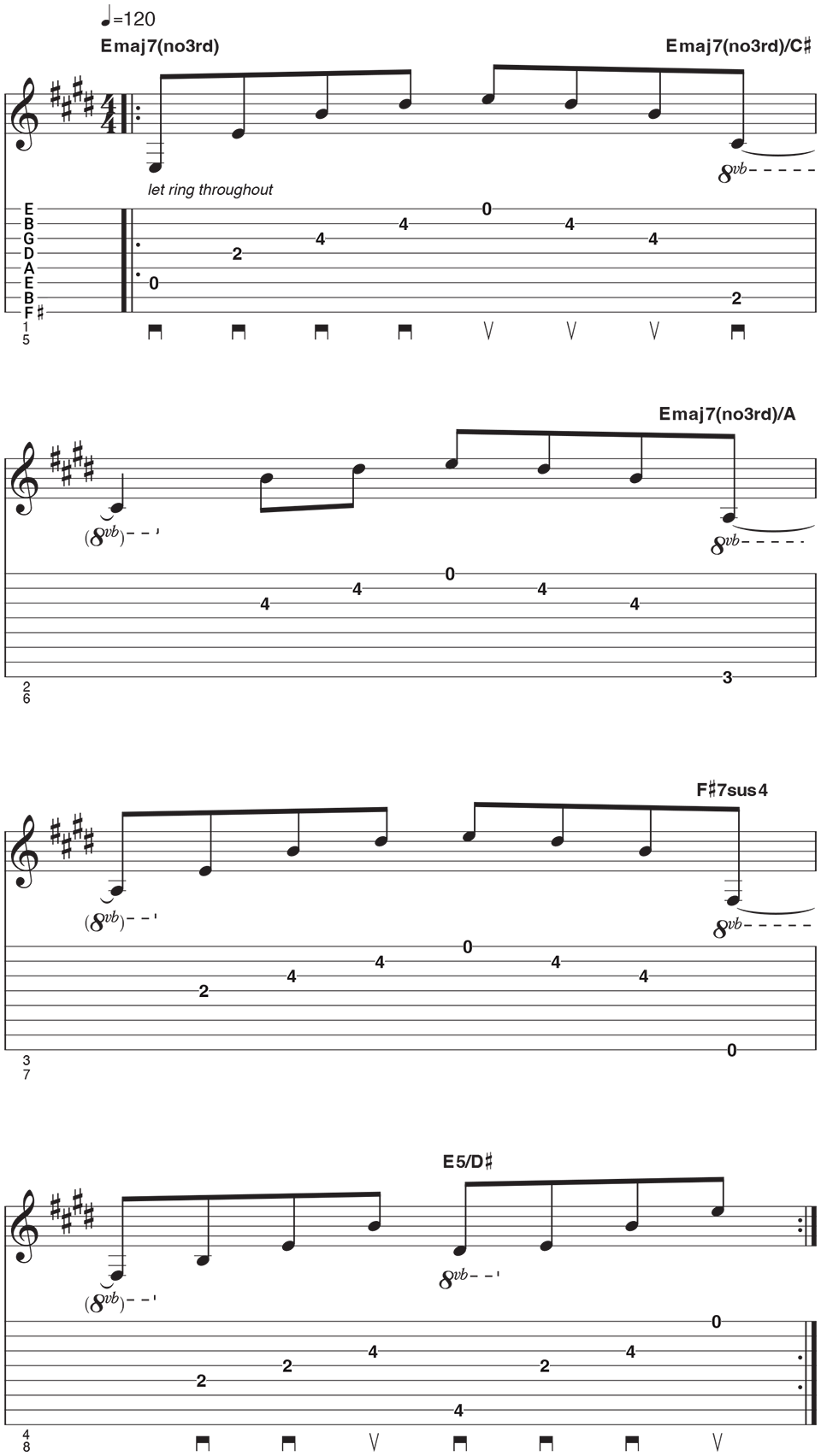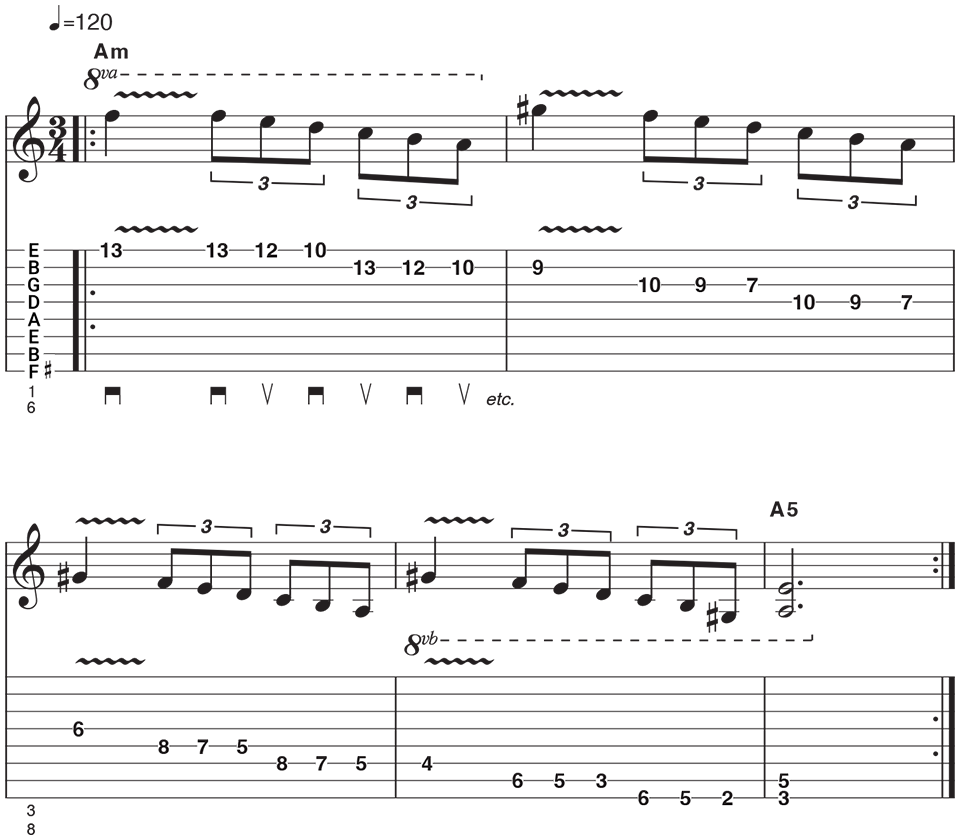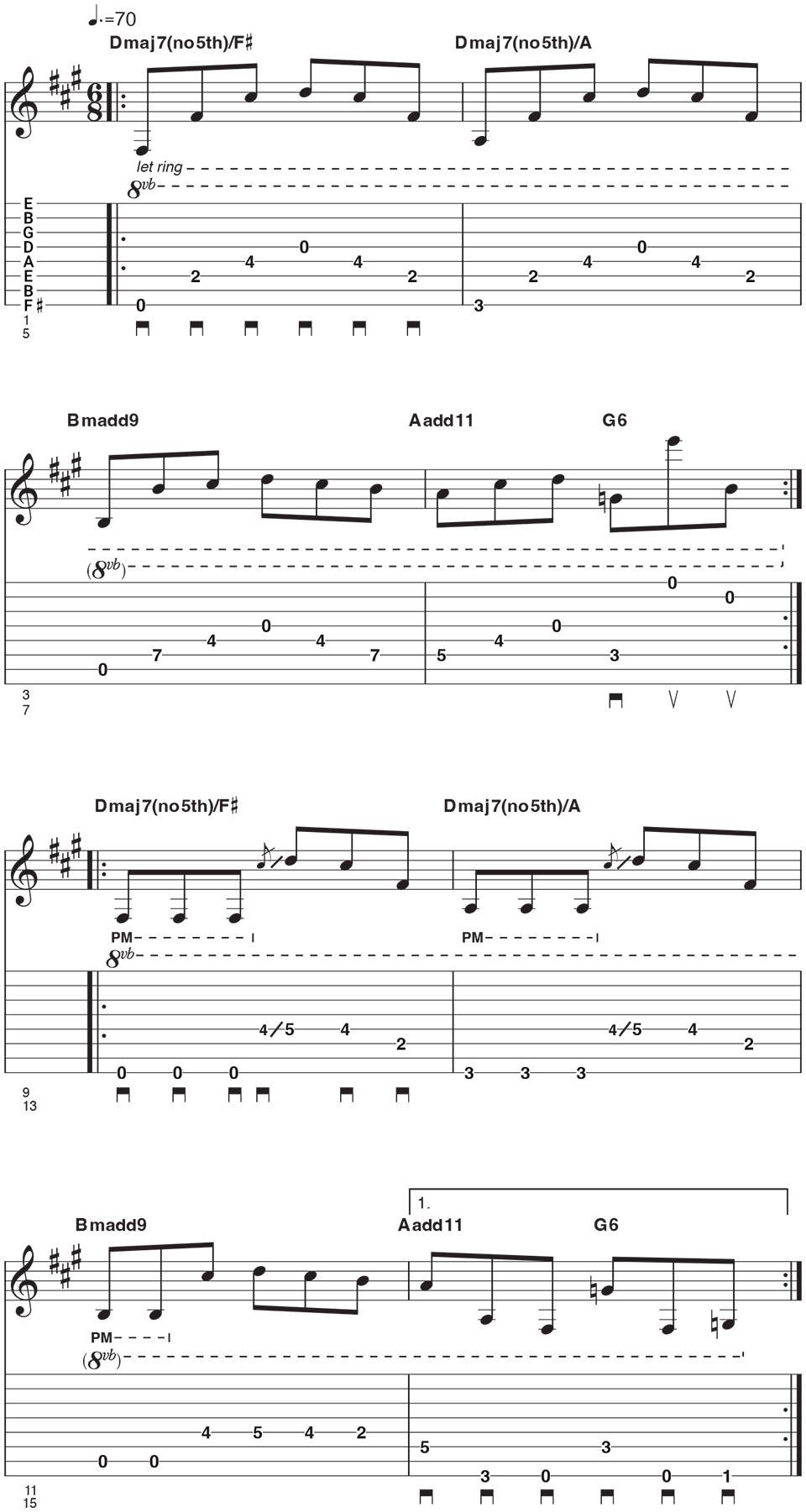Meshuggah pioneered it, Periphery took it to new levels, and John Petrucci thinks it opens up "a new world" – here is everything you need to know about learning 8-string guitar
Six ways to get the most from your 8-string guitar by Haken’s Charlie Griffiths
When Swedish metal icons Meshuggah unleashed their mighty, low down, single-string riffs on Nothing in 2002, the meaning of the word heavy was henceforth redefined. From then, the 8-string guitar has gradually gained more popularity in the progressive metal sphere, with bands like Periphery, Animals as Leaders, Dream Theater and Sleep Token underpinning their music with the extended range of the instrument.
Simply put, the 8-string is a 6-string with two extra low strings. The most common tuning from low to high is F# B E A D G B E (that is, standard guitar tuning with low B and F# strings). There is also a drop E version for extra heaviness (low to high): E B E A D G B E. Pitch-wise, this essentially takes the 8-string guitar into bass guitar territory, but the lighter string gauge and the various pickup options lend it a different sonic character.
Popular string gauges for the low eighth string (F#) can range from around 0.64 (light) to 0.80 (normal/heavy). The tuning stability and string tension is often aided by a longer scale length of around 27”, which is often aided by fanned frets to make the lower strings longer than the higher ones, much like the strings under the lid of a piano.
In this article you’ll use transferrable six-string skills that can be applied to the 8-string, so you’ll be up and running in no time. Across the six examples you'll expand scale shapes across eight strings, use octave shapes to aid navigation, play new chord shapes with wide interval spacing, plus use essential riffing techniques such as single note syncopation and effective string muting.
Sonically, you will need a clean tone and a distorted tone. For the clean tone, use mild compression, chorus and some delay to keep dynamics even and to help notes blend together. For the distorted tone, a boost pedal in front of an overdriven amp will help control the low end and prevent it from sounding flubby.
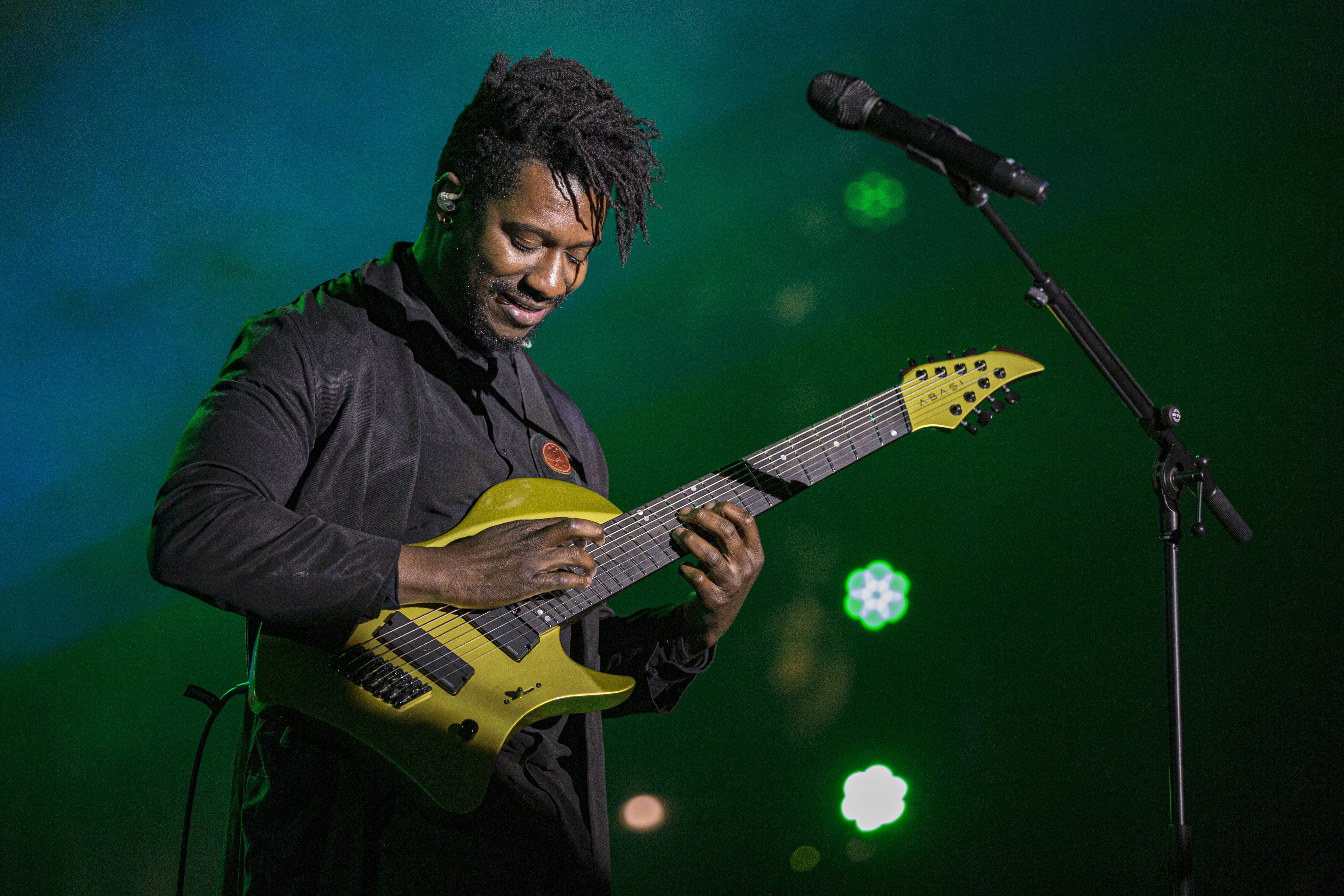
Example 1 . A minor pentatonic scale for 8-string guitar
This is an obvious way to get acquainted with the lower strings: playing the A minor pentatonic. Start at the 8th fret on the first string using your fourth finger and descend the A minor pentatonic scale [A C D EG ], using the same fingering you would use on your 6-string guitar.
Once you reach the root note on the sixth string, add four more notes on the lowest two strings, then shift down to the 3rd fret and ascend in this adjacent position. In short, you're descending shape 1, then ascending shape 5, of A minor pentatonic on an 8-string guitar.
All the latest guitar news, interviews, lessons, reviews, deals and more, direct to your inbox!
Example 2. Low octaves to develop familiarity
This riff provides a great way to map out the natural notes along the eighth string (F# string). First play the familiar G A B C D E F notes along the sixth string with your fourth finger. After each note add the octave below with your first finger positioned two-frets and two-strings lower. For note variety and rhythmic color you will alternate the fretted notes with the open eighth string for some serious Swedish riffage in the vein of Meshuggah’s Fredrik Thordendal and Mårten Hagström.
Example 3. Chugging with low notes and rhythmic syncopation
This riff uses just two notes G and F#, but the focus is on the rhythmic syncopation. You can think of this as a pattern of nine eighth-notes which repeats three times, then ending with a phrase of five eighths. Use both fret-hand and palm muting to keep the rests in-between absolutely silent.
Example 4. Arpeggiating with eight strings
This upbeat clean arpeggio part is reminiscent of Misha Mansoor and friends from Periphery. Keep your third and fourth fingers on the 4th fret notes while allowing the first string to ring together with them. Use your first and second fingers to reach down to the low strings' bass notes.
Tip: use the picking directions shown, at least to begin with, as keeping arpeggios sustaining on an 8-string guitar can be tricky and you might be inclined to readjust your picking hand posture. All down strokes then all up strokes is the most straightforward option here.
Example 5. Lead line using the A harmonic minor scale
Exotic scales and 8-string guitars can be perfect partners so here's a great example to get you comfortable across all eight strings. This lick is based in the A Harmonic minor scale [A B C D E F G#] and can be viewed as four different octaves of the scale, with each octave played on two pairs of strings. Use alternate picking to descend each six notes of the scale, and fret using your fourth, third and first fingers. Shift your first finger down a fret to finish each descent (eg Bar 2, beat 1's G# note at the 9th fret, second string) and add vibrato to the sustained notes.
Example 6. Putting it all together
This final example is a mini piece that combines techniques from the previous examples and has a Dream Theater-style flow with various twists and turns. Start with the arpeggiated clean chords, followed by a tight riff version of this theme; play both sections with downstrokes throughout. Next play the descending scale with alternate picking and finish with the sixteenth-note F# Phrygian [F# G A B C# D E] riff using a combination of palm-mutes and hammer-ons.
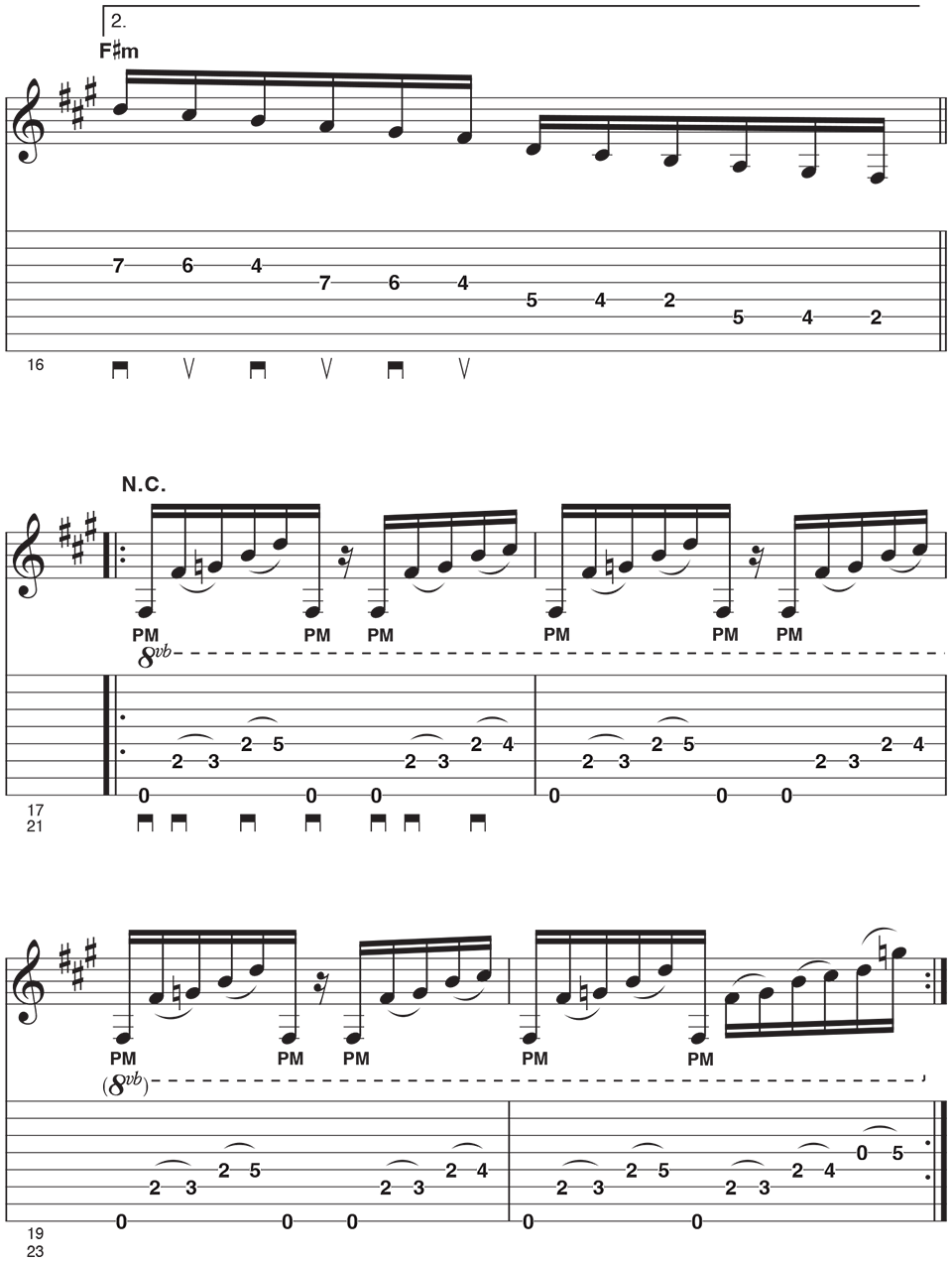
Great examples of 8-string guitar
Meshuggah – Bleed
For many, Meshuggah are titans in the world of progressive metal. Bleed first featured on their 2008 album, ObZen and has since become a popular live song. Listen to the low string rhythmic syncopations on two 8-string guitars – it sounds aggressively huge!
Animals As Leaders – Monomyth
Being that he has his own range of guitars, Tosin Abasi is a leading light for 8-string excellence and his approach is unique and instantly identifiable. Monomyth uses the full range of the guitar, from arpeggio based melodies, to fusion-esque chords to thumping slap guitar percussive riffing, all combined in a seamless composition.
Periphery – 22 Faces
Periphery's huge and intricate sound is headed up by three guitarists: Misha Mansoor, Jake Bowen and Mark Holcomb. This live rendition of 22 Faces is an excellent example of their creativity with 8-string guitars.
Sleep Token – The Summoning
The low end riffing by IV (yes, that is his credited name) on The Summoning is used as a perfect balance to Vessel’s emotive vocal melodies. It also finds space to add djent inspired syncopation, locking in tight with the bass and drums. Emotive soloing too at 2:04 – beautiful brutality indeed.
Dream Theater – In The Arms Of Morpheus
The latest Dream Theater album Parasomnia opens with an instrumental featuring some hefty, magisterial tones from John Petrucci's signature Music Man Majesty 8-string. This is still the Dream Theater we love, but with added dimension, proving that the instrument can adapt to and enhance the player’s style, without defining it. Check out the heavy riff he drops at 1:52 and then gets even more intense at 2.37.

Charlie Griffiths plays guitar in acclaimed prog-metal outfit Haken, and has a wealth of experience handling corporate and session gigs for genres as diverse as rock, heavy metal and pop. He has been a regular contributor to Total Guitar, Guitar Techniques and Guitar World for over fifteen years. His latest release is Tiktaalika - Gods of Pangaea which features stunning playing on, this time, 6-string guitars.
- Jason SidwellTuition Editor – GuitarWorld.com, GuitarPlayer and MusicRadar.com
You must confirm your public display name before commenting
Please logout and then login again, you will then be prompted to enter your display name.

